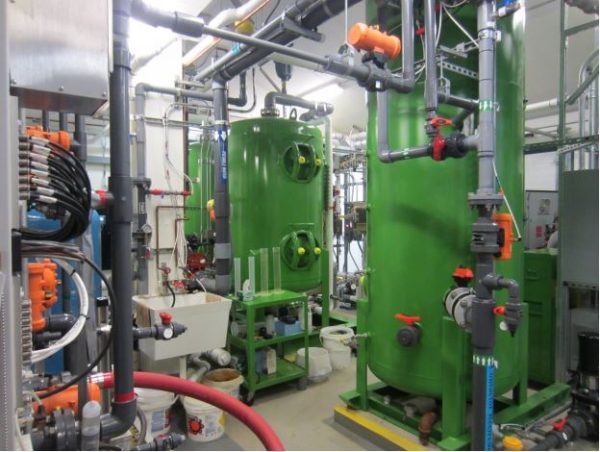
In the northern parts of the state, having a stable water and sewer system is vital. Villages have struggled with keeping water tanks filled and unfrozen.
“In Kivalina and Selawik, we were challenged to do this year after year for various reasons,” said Carl Weisner, Public Services Administrator for the Northwest Arctic Borough.
Reducing water system emergencies and ensuring local water operators are trained effectively were two major goals of a program that was put in place last year: the Community Utility Assistance Program, or CUAP.
The program is a partnership between the borough, Alaska Native Tribal Health Consortium and Maniilaq Association to bring local communities in compliance with state criteria for water utilities.
Safe, effective utilities are the main focus, but it also means that the local governments will be more competitive for federal and state construction grants.
“Many of our communities don’t meet the minimum standards for that,” said Borough Public Services Director Nate Kotch. “Therefore when they go out to apply for grants that would help for their utility, they’re not eligible. So what we’re trying to raise those scores. And collections is a major part of that.”
When Kotch says collections, he means people paying their bills. He says it’s one of the major components that water utilities are judged on. To help communities with their monthly bill , the borough provides utility subsidies to consumers, reducing the price by about two thirds.
“Some villages, it’s as high as $200 a month, and their rates have dropped down to $80,” Kotch said. “So most communities are now paying $60 to $80 a month for their utility.”
The rates for commercial and school water use have also decreased by half with the subsidies. The borough also pays for fuel to operate the water plants, and the salaries for the operators. They also take over bill collecting. Kotch says the village governments are getting between $150,000 to $200,000 from the Borough under the program.
While most of the villages have been able to comply with the standards of the CUAP, one of them hasn’t for most of the year — the village of Shungnak, 150 miles east of Kotzebue. One of the requirements of the program is a 70 percent collection rate. Weisner says that penalties for not paying your bill can be hard to enforce in small communities like Shungnak, which has a population of about 270.
“If they don’t pay, you have to cut them off,” Weisner said. “And that’s not something that’s easy for a water plant operator if you have to cut off your neighbor, or your mother-in-law or what have you.”
Weisner says the borough is working to try to get Shungnak back into compliance. He says that rates could rise to levels higher than they were before the CUAP if the issues persist.
“Not only did their rates go back up to $180, but they’re projected to rise to as much as $240 per month next summer because of labor hours being more than budgeted, things like that,” Weisner said.
Every village in the Northwest Arctic Borough has signed up to the CUAP, except for one. The village of Noatak, about 55 miles north of Kotzebue, has yet to opt in to the program. The village of just under 600 people is the only Northwest village governed solely by a tribal government, which operates the water treatment plant.
Noatak Tribal Administrator Herbert Walton says that the village believes that they already do a good job maintaining their water utility, and they don’t need help from the borough.
“Our Noatak utility water operators take care of the village real good,” Walton said. “And the one who does the bill collecting does a good job. We’re kinda stable in what we are.”
Before the CUAP, Noatak had among the lowest costs for water utilities in the region. Under the program, their rates would drop from $138 to under $50. The program has brought all other village rates down considerably, making Noatak rates the most expensive in the region now.
Walton says that the village wants to maintain control of the plant. He says the village would be more than happy with the subsidies from the borough that come with being in the program.
“They could get us our diesel power, or our utility if they want. That sure would be helpful,” Walton said. “But then, we’d like to take care of ourselves.”
Kotch with the borough agreed that Noatak has done a good job with maintaining compliance with state water standards, but he says the extra money from the program would benefit Noatak. He also says that the borough wouldn’t be in control of the water utility.
“It’s their program, their utility,” Kotch said. “The employees, even though we pay them, they’re still city employees or whoever owns the utility, their employees.”
Despite Noatak’s trepidations, Kotch says they’re going to continue to try to get them onboard with the CUAP. Aside from saving money, he says village operators would also have more extensive training to keep the water plants operating in the coldest months.
Wesley Early covers Anchorage life and city politics for Alaska Public Media. Reach him at wearly@alaskapublic.org and follow him on X at @wesley_early. Read more about Wesley here.





